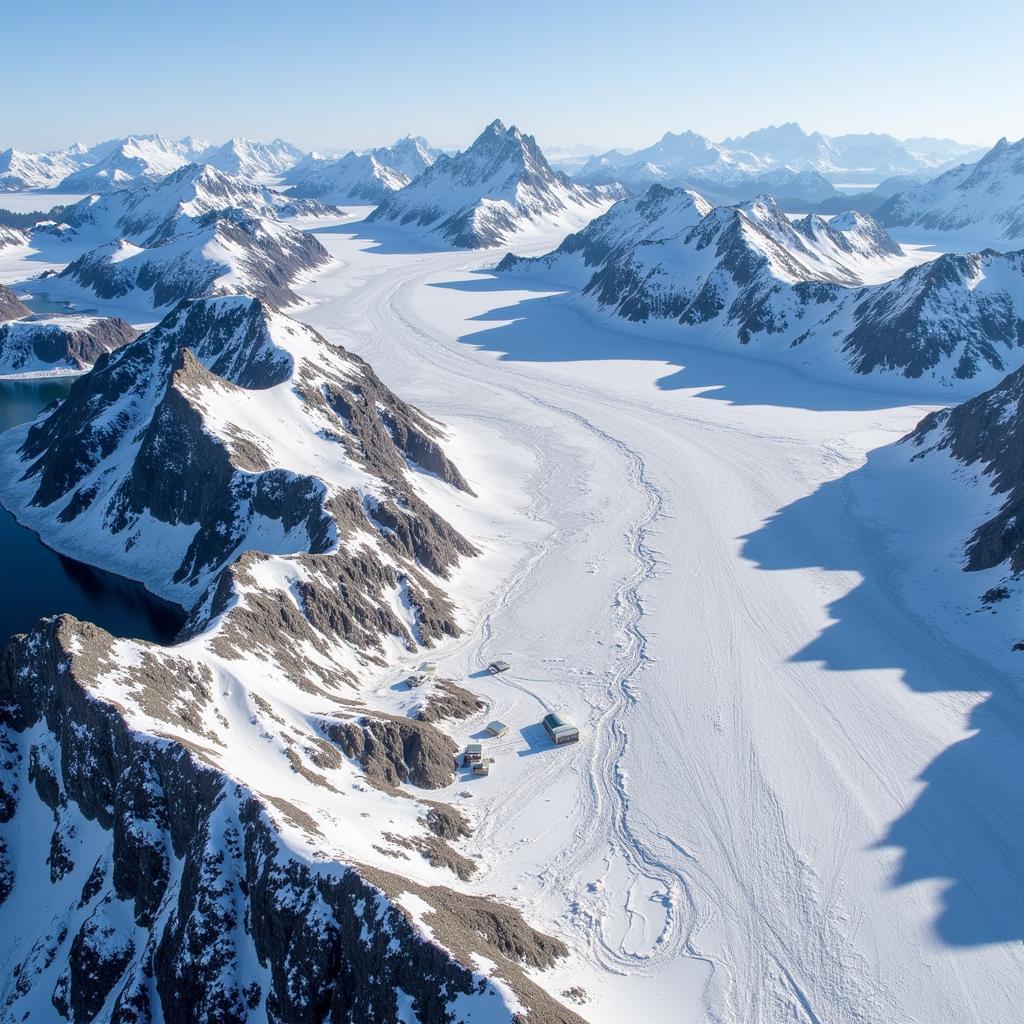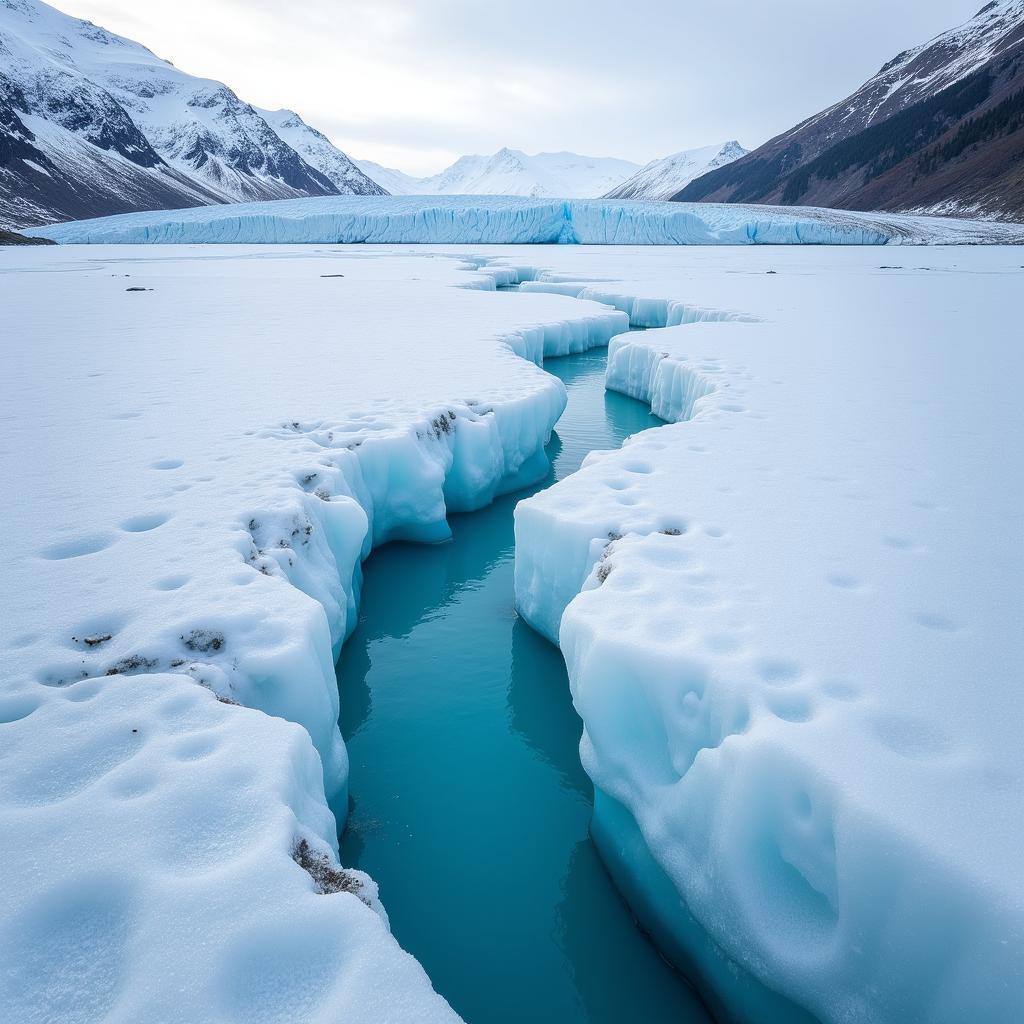The Juneau Icefield Research Program (JIRP) stands as a testament to human curiosity and scientific endeavor in one of the world’s most extreme environments. Nestled amidst the breathtaking beauty of Alaska’s Juneau Icefield, this program has captivated researchers and adventurers alike for over 75 years.
 Aerial view of the Juneau Icefield research station
Aerial view of the Juneau Icefield research station
Delving into a Frozen World: What is the Juneau Icefield Research Program?
Founded in 1946 by renowned glaciologist Maynard Miller, JIRP has evolved into a world-renowned research program dedicated to understanding the dynamics of glaciers, climate change, and the delicate ecosystems they support. Each summer, a select group of students, scientists, and educators embark on an immersive six-week expedition to the heart of the Juneau Icefield.
The program’s longevity and success can be attributed to its unique blend of cutting-edge scientific research and hands-on field experience. Participants gain invaluable insights into glaciology, geology, climatology, and biology, all while navigating the challenges and wonders of this icy wilderness.
Unveiling Nature’s Secrets: Research Areas of the JIRP
JIRP’s research encompasses a wide array of disciplines, all interconnected by the common thread of understanding Earth’s changing climate and its impact on glacial environments. Here are some of the key research areas explored by JIRP scientists:
1. Glacier Mass Balance: Measuring the Pulse of a Changing Climate
Glaciers serve as sensitive indicators of climate change, expanding or shrinking in response to variations in temperature and precipitation. JIRP researchers meticulously track the mass balance of glaciers on the Juneau Icefield, measuring snowfall accumulation and ice melt to determine whether glaciers are gaining or losing mass over time. This data provides crucial insights into the pace and magnitude of climate change in this region.
2. Ice Core Analysis: Deciphering Earth’s Climate History
Ice cores, extracted from the depths of glaciers, act as frozen time capsules, preserving clues about Earth’s past climate. JIRP scientists analyze the chemical composition of ice cores, studying trapped air bubbles and isotopes to reconstruct past temperature, precipitation, and atmospheric gas concentrations. This historical data provides valuable context for understanding current climate trends and predicting future changes.
3. Glacial Hydrology: Unraveling the Mysteries of Meltwater
As glaciers melt, they release vast quantities of freshwater into surrounding ecosystems, influencing streamflow, water quality, and aquatic life. JIRP researchers investigate the complex processes of glacial meltwater runoff, studying its pathways, timing, and impact on downstream environments. This research is crucial for understanding the implications of glacier retreat on water resources and ecological communities.
 Glacial stream flowing through the Juneau Icefield
Glacial stream flowing through the Juneau Icefield
The Legacy of JIRP: A Beacon of Scientific Exploration
For over seven decades, the Juneau Icefield Research Program has been at the forefront of glacial and climate change research, leaving an enduring legacy on the scientific community and beyond. Its commitment to fostering the next generation of scientists ensures that the quest to understand our planet’s icy realms will continue for years to come.